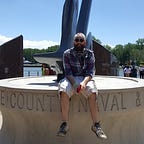Conversing with Audience
In the book Public Speaking written by James Albert he brings up this idea of “Conversing with an Audience”. This is the idea that people when public speaking must be able to adapt and read their audience. In the book Albert starts off with an example about this guy who has a conversation with someone and has no problem doing it but when you add an audience of people the same conversation that was easy before becomes hard. This is because the audience has changed so you must adapt to the new audience by not changing the topic of the speech but how you are giving it.
The first difference that you must adapt is the vocal part of the speech. When talking one on one to someone usually a person speaks softer and mellow. But when given a large audience you might have to speak loud enough so everyone can hear you. The volume is not the only thing that will have to change you also will have to talk with some excitement. Something to attach your audience to the speech and let them know you care about it.
James Albert also believes that a “experienced speaker has learned to read less demonstrative, but no less certain signs of the thoughts and moods of his hearers.” This statement means that depending on the audience a speaker needs to read how they are feeling and adapt to it. Is the audience bored then maybe you need to make it more exciting? Do they approve or disapproves and how can I change that? Are they confused and do I need to clear something up? These are all questions to figure out the feelings and moods of the audience and help make your speech just a little better.
The third and final way to adapt to a new audience is how the public speaker prepares. For a small group of peers your preparation might be a couple minutes before hand. Where a large auditorium full of strangers might leave you preparing for a week. Albert believes that for a large audience a true public speaker should prepare whenever there is opportunity.
In the book public speaking James Albert shows how you must adapt and read your audience as it get larger. Three major ways of doing this is vocal, reading the audience, and preparation.
Work Cited
Winans, J. A., & Hudson, H. H. (1931). A first course in public speaking, with debating and oral reading. New York: Century.
